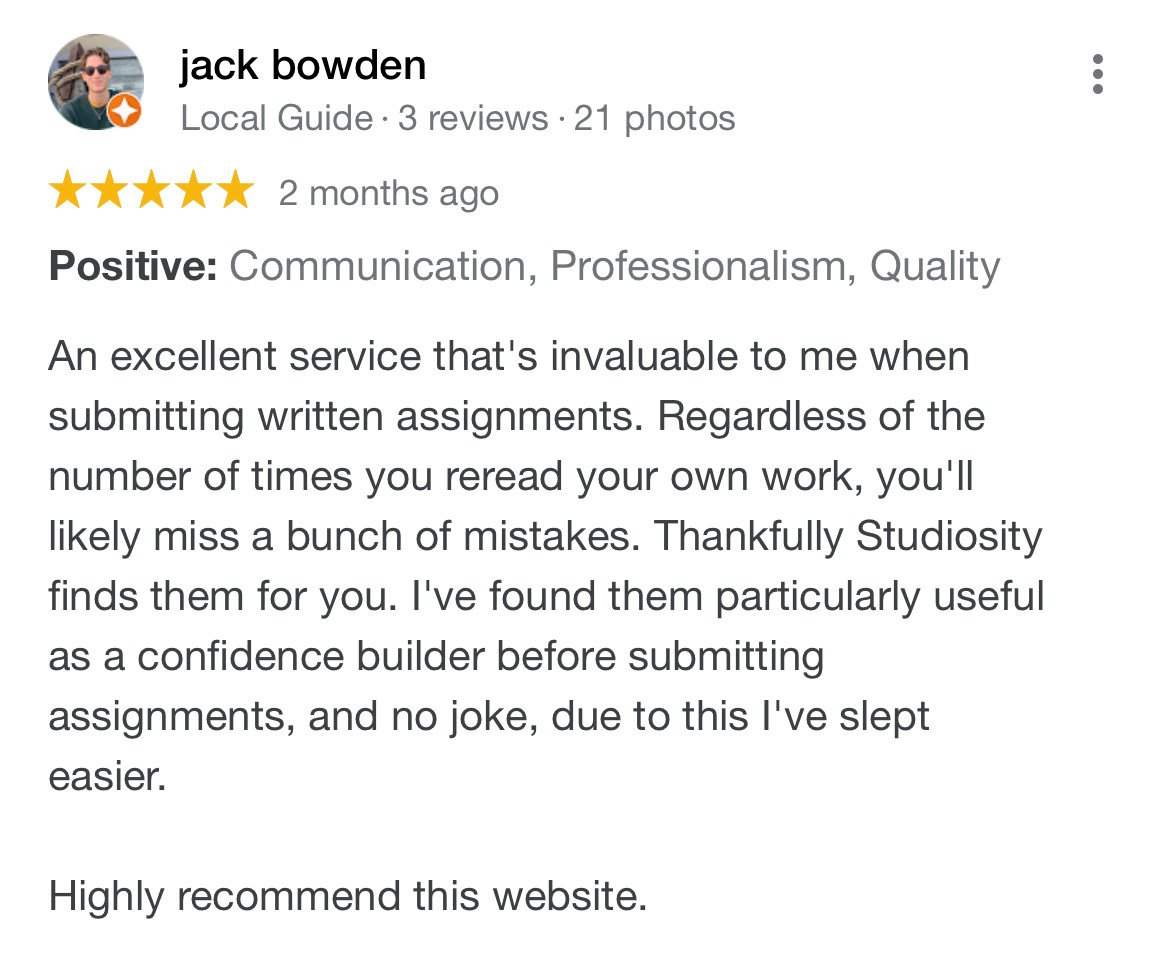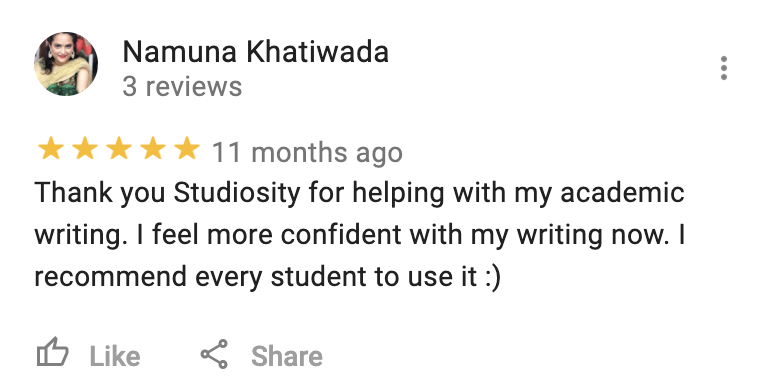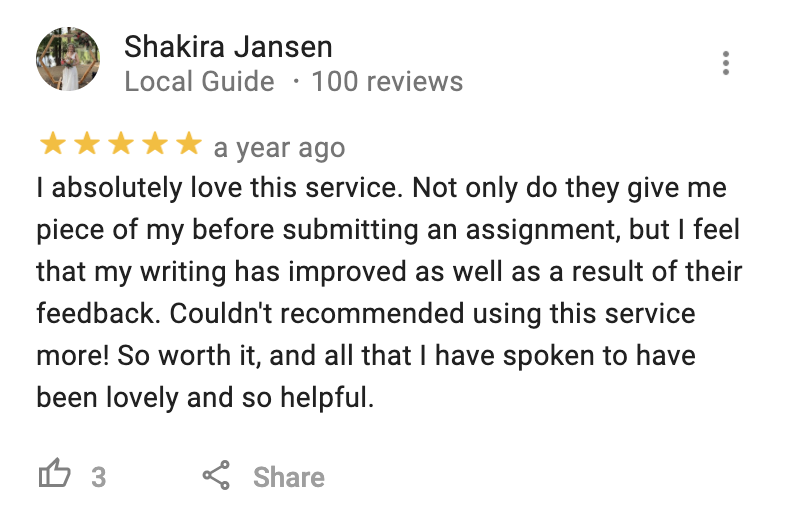Even if you have an awesome CV or resume, filled with all an employer's desired skills and experience, it can be the inclusion of an original, knock-em-dead cover letter that really cinches a job interview. 💥
Cover letters are your way to set yourself apart from other candidates. Your CV can include more details of your relevant experience, skills, education or qualifications, but in your cover letter you can really show not only your personality, but also show an employer why they should pick up the phone and call you, today, over anyone else.
Below are four things you can do to write a noticeable cover letter. Although I've called them 'hacks', these aren't exactly time-savers in practice; but they will help you not to waste your time sending endless job applications into a digital abyss. So. You're welcome. 🙏
You can also log in to Studiosity for fast, detailed feedback on your existing cover letter, if you already have a draft: 
Cover letter hack #1: start from scratch
The only way to really leverage your cover letter and make it stand out from all the others, and I cannot stress this enough, is to write a fresh one every single time you apply for a job. DO NOT just copy and paste whatever you wrote in the last cover letter. Say it with me: that 👏will 👏not 👏work👏.
Sure, you can borrow brilliant sentences you wrote last time, or anything that might be of particular relevance but I assure you: the best way your cover letter will make you stand out from the crowd is if you write it from scratch, as a response to the specific job advertisement itself.
Writing cover letters like: pic.twitter.com/kOElRClkWL
— Liz but scary🌚 (@LizAnneCraig) October 16, 2019
Cover letter hack #2: careful & deliberate reading
Thus, the key to a really good cover letter is READING: very careful reading of the job ad. Read it, re-read it, and then read it again. Read it with the mind frame of trying to understand WHAT the employer is looking for in a job application. What do they want to see? Who are they looking for? They've written this job ad with a certain type of person in mind - and even if you are exactly that person, proving that you are on paper, at a glance, is a real challenge. So you really really must carefully read the job ad.
Now that you've read it, you can pull out the key words, skills, experience or attributes that you know the hirer is looking for, the most important things. And not only the keywords, but read between the lines! What are they trying to say? Where they say things like "we're looking for someone who is a self-starter", that means they don't want to micro-manage or hand hold - they want to know that you can take initiative and go for things on your own. If they say they're looking for someone who has "extremely high levels of customer service", you could even tell a story in your cover letter about a time where you delivered exceptional customer service (a 'story' needn't be longer than 100 words, or even a sentence or two).
I wish it was acceptable in CVs or cover letters to mention all the things that would make me a good colleague. Things like "always replaces printer paper" & "regularly refills electric stapler." "Sticks to time on conference panels" etc etc. I'm very responsible. Hire me.
— Dr. Emily Fine (@Early_Modern_Em) October 21, 2019
Pick out the few most important points from the job ad, and answer them in your cover letter, with how you fit that description (almost like an essay - a really short, more personalised essay). Don't just talk about yourself generally - how you're 'punctual' and 'reliable' and 'hardworking'; nobody cares (#sorrynotsorry). You need to show that you fit exactly what they want. So choose at least three (but maybe no more than five) attributes from the job ad, and speak to those specifically in your cover letter.
Cover letter hack #3: personalise, personalise, personalise
In every instance where you can do so, address your cover letter to a real person, ideally the person who is hiring for the job. Quite often their name will be on the job ad itself (again, it comes back to careful reading), but if it's not there, you could always Google the company, have a look at their website, find out who the head of the department is for the role you're applying for, or the Hiring Manager, or Head of HR, and address it to that person. When there is no name on the job ad, it definitely never hurts to go and find a name, of a person at the company who looks like the relevant person, to address your cover letter to. It will put you automatically ahead of any other candidates who use lazy "Dear Hiring Manager"s, or at worst: "Dear Sir/Madam". 😴
Just image you had to read 50 cover letters a day, wouldn't you rather if someone used your name?
Cover letter hack #4: read it aloud, and/or show it around
As with all writing, it's a good idea to read it to yourself aloud. The chances are, if you're stumbling through it and finding it hard to read, an employer will too.
You can always show it to a friend or family member for a sense-check (never hurts).
You might already have free access to Studiosity through your university, TAFE, college, school or public library (check our list of partners here). If you do, then you may be able to upload your cover letter through our Writing Feedback service for fast, helpful feedback on the structure, flow, choice of language, grammar and spelling. Just select 'CVs, resumes, and cover letters' as your document type, when you're submitting your file to Writing Feedback.
Some of our library partners also offer live, one-to-one help with CVs, resumes and cover letters as an option via our Connect Live service. If your library has chosen to offer job skills help, you'll see it in the subject selection list when you're composing your question. You can then attach your document to your pre-session question, for a Specialist to chat through with you.






